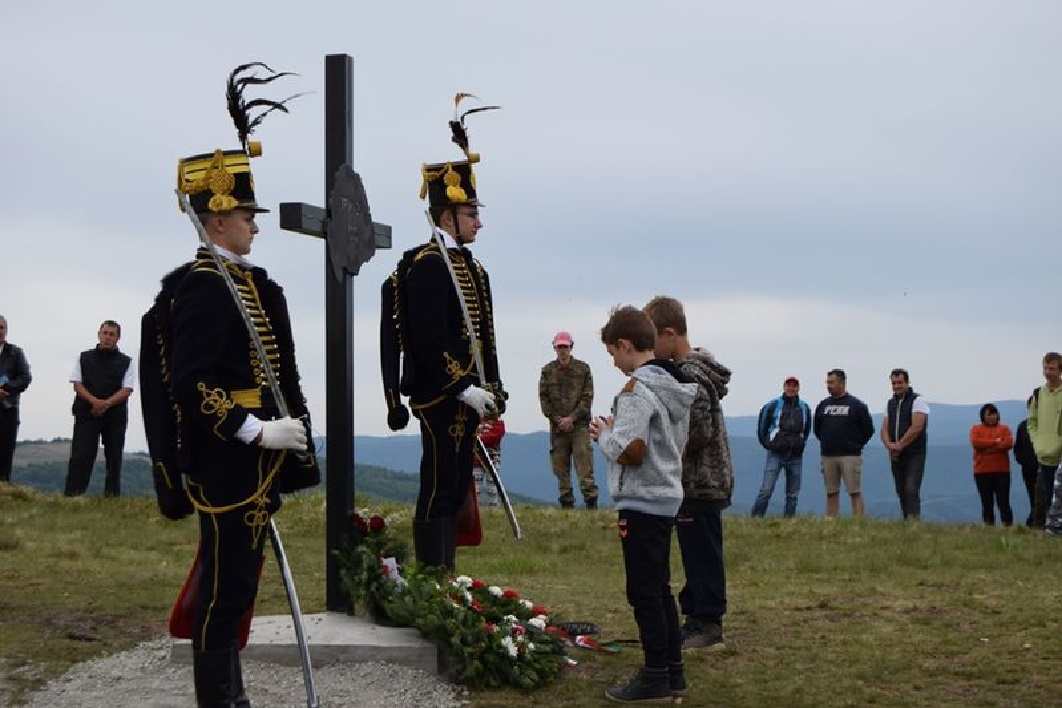Last week, some 20 people arrived in off-road vehicles to the 1,302-meter-high Gyepár-tető (Gyepár-peak), near Kézdivásárhely (Târgu Secuiesc) in Kovászna (Covansa) County, where the Szekler flag had been inaugurated by the local Szekler community just two months earlier. The group tried to tear the flag down but were interrupted, Magyar Hírlap reported referring to local sources.
The Szekler flag and a memorial cross were inaugurated ceremoniously on the first Sunday of June this year in commemoration of the 100th anniversary of the Treaty of Trianon, which was signed on June 4, 1920, and resulted in Historical Hungary losing two-thirds of its territory (including Szeklerland and all of Transylvania) and one-third of its ethnic Hungarian inhabitants.
According to eyewitnesses, about 20 people arrived in jeeps to the hardly accessible peak and tried to tear the Szekler flag down from the top of its 12-meter-high pole. They partially succeeded, even breaking the winch, but were then interrupted by a local shepherd who ended the vandalism.
According to Magyar Hírlap, the perpetrators arrived from the neighboring Bacău (Bákó) County, which is home to a Romanian majority. (By comparison, Kovászna County’s population is 75 percent ethnic Hungarian/Szekler).

Setting up the memorial was the idea of Barna Miklós, a forester from the closest village, Lemhény (Lemnia); the local community helped him implement the plan via volunteers and donations.
The Trianon memorial cross and the Szekler flag on its 12-meter-high pole were inaugurated on June 7, 2020, in the presence of traditionalist Hussars and some 300 people.
Related: Map of France after a Treaty of Trianon
Title image: The Szekler flag on the top of the 1,302-meter-high Gyopár-tető before the vandalism. (Photo: Magyar Hírlap)